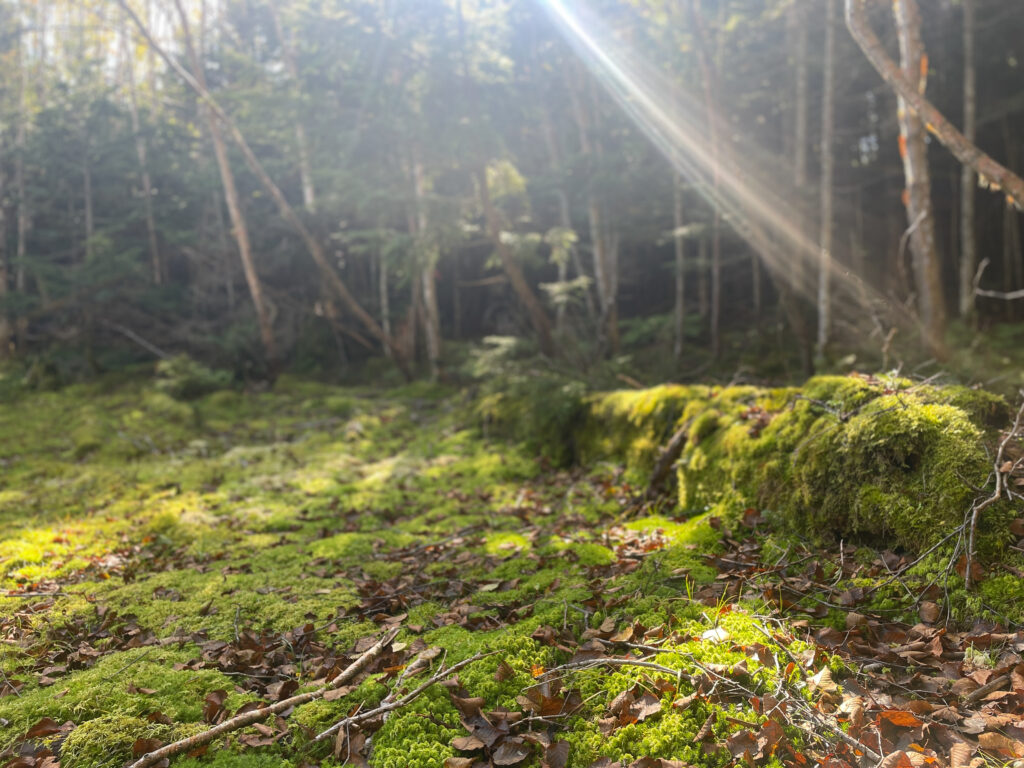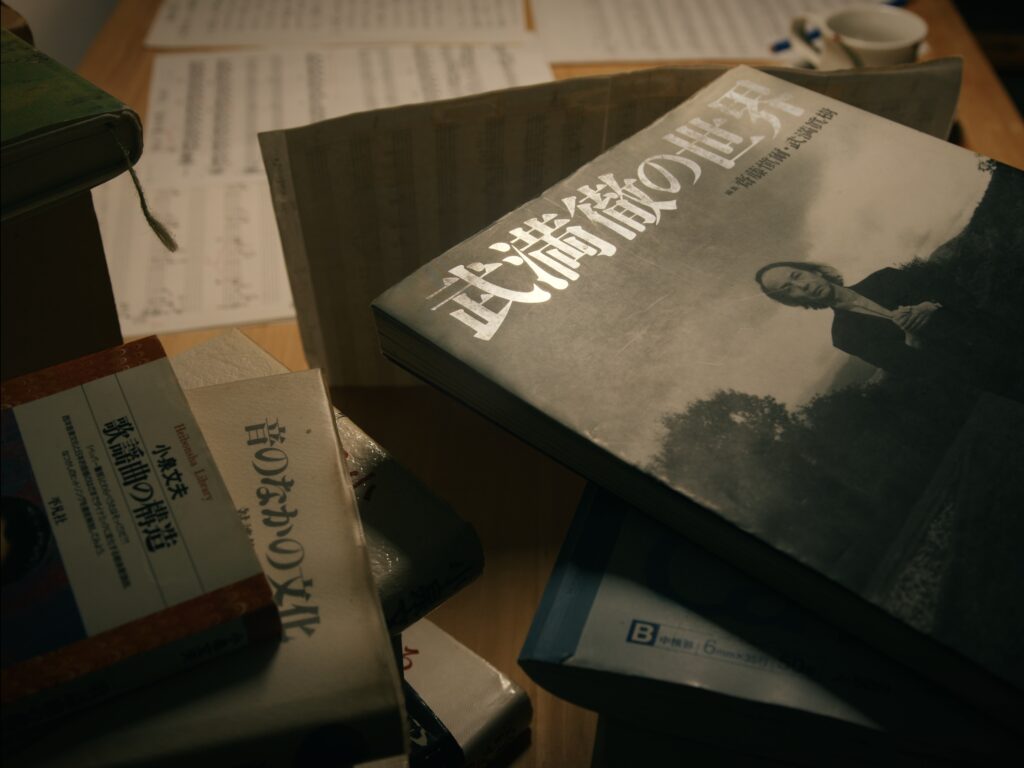
"The drama SHOGUN unfolds as layers of status, power, religion, desire, and love intertwine, sometimes colliding, sometimes falling into disarray. Good and evil, the foreign and the Japanese—these distinctions aren't clear-cut. It's a world where resonance and dissonance overlap.
Constructed on 'layers,' gagaku feels conceptually fitting. Not just in concept, Taro and I thought that gagaku could uniquely influence the atmosphere of visual media.
Note: Although SHOGUN is a drama, it feels like a film due to its scale. We will refer to its soundtrack as 'film sound' for the sake of discussion.

Film sound is generally composed of "voice," "music," and "sound effects" (Reference: The History and Evolution of 'Film Sound'...MOVIE WALKER PRESS, 2020/9/12, https://moviewalker.jp/news/article/1006445/).
"Voice" refers to the actors' voices. "Music" is the film score. "Sound effects" can be divided into three categories: SFX (special effects), FOLY (foley, or movement sounds), and environmental sounds.
SFX and foley sounds are created to heighten emotions and realism. Environmental sounds refer to the layers of sounds that exist behind all scenes, representing the actual sounds present in the environment.
We believe that gagaku can serve as both "music" and something akin to "environmental sounds."
#fourthmoviesound

The sho is the only traditional Japanese instrument that plays chords, and its chords are unique, not handled in modern Western harmony. It gives the impression of sounds and light pouring from the heavens, filling the space. It's said to imitate the call of the phoenix.
The hichiriki represents earthly sounds and human voices since ancient times, while the ryuteki features a broad range (two octaves) with moving melodies, resembling a dragon's call flying between the sky and the ground.
There are other instruments like the gaku biwa and shoko, but the sound produced when these instruments play together is beyond human understanding—it's best described as "cosmic." Some writers have even said it exists "outside human emotions."
As mentioned before, the sounds and melodies of gagaku have origins in Japan dating back to the Nara period and were perfected during the Heian period. The techniques and tones have been preserved up to the present day. Therefore, gagaku might have the power to instantly transport one to spaces from over a thousand years ago, to the sensibilities of people from those times, and to a dimension filled with ancient energy.
While it emits a unique sound and energy, its resonance does not disrupt nature but coexists with it. Even though it's sound created by humans, it feels like natural sounds such as the wind, the rustling of leaves, the roar of waterfalls, the murmur of streams, or the calls of birds. Sometimes it feels like one of nature's phenomena.
Moreover, it's said to have the effect of 'flattening the mind.' Indeed, when listening to gagaku, one's senses (depending on the piece) seem to become natural, similar to when one is surrounded by nature.
Gagaku can warp us to ancient spaces and sensibilities, is filled with ancient energy, mimics the calls of unknown creatures, and resonates like a natural phenomenon. It is too mysterious (#mysterious), but I realized that Gagaku might be "music" and also "environmental sound" created by humans.
Incorporating gagaku into visual media might allow it to play a 'fourth' role or effect.
When the sounds of gagaku are used in visual media, they create a space that feels sacred, mysterious, and reflective of ancient Eastern spirituality. This makes the visuals more three-dimensional and adds depth. It even subconsciously opens up one's sensitivity and flattens the mind.
It could potentially pull the audience further into the story and visuals.
'The Fourth Element of Film Sound.'
Doesn't that sound intriguing?
For those who want to experience this firsthand, start with SHOGUN. The soundtrack, gagaku, and traditional Japanese instruments fit perfectly with the historical perspectives, societal conditions, ideologies, and the emotions and development of the characters in the story.

The fit between visuals and music.
Taro wrote a thesis at Tokyo University of the Arts titled Toru Takemitsu’s Counterpoint of Movie and Sound in the Films. At that time, Taro probably never imagined that film music, film sound, and gagaku would be related.
Toru Takemitsu (1930-1996), a leading Japanese composer and music producer, also composed new pieces for gagaku.
I can't help but feel a sense of synchronicity (#synchronicity) with these two and the phenomenon currently unfolding.
In the next installment, we might diverge a bit from gagaku to explore Toru Takemitsu (#torutakemitsu) and Movie Sound (#moviesound). Let's delve into these topics a little more.
Written by Atsuko Aoyagi / ao.Inc.
#DailyThoughts #JapaneseTraditionalMusic #Composition
#Gagaku #ComposingGagaku #NonMusic #GagakuPerformance
#FilmMusic #CinematicMusic #SpatialMusic #GagakuStories
#WhyIs #Gagaku #Layer #AndMysterious
#soundtrack #movie sound #effect #effects that gagaku brings to movie
#fourth movie sound
